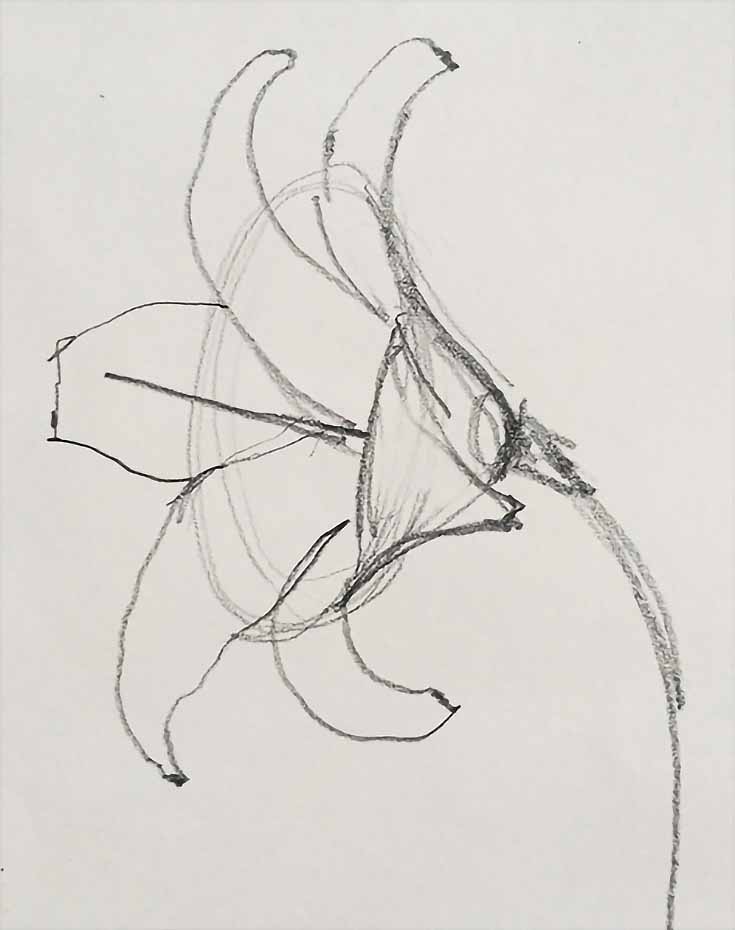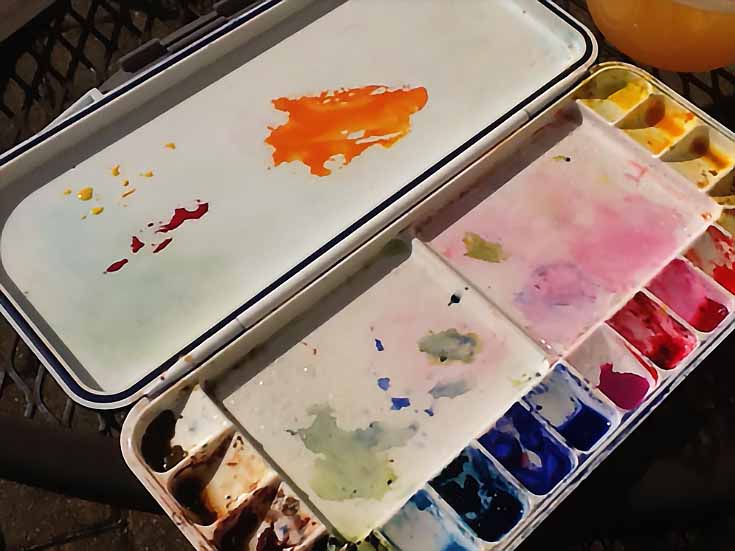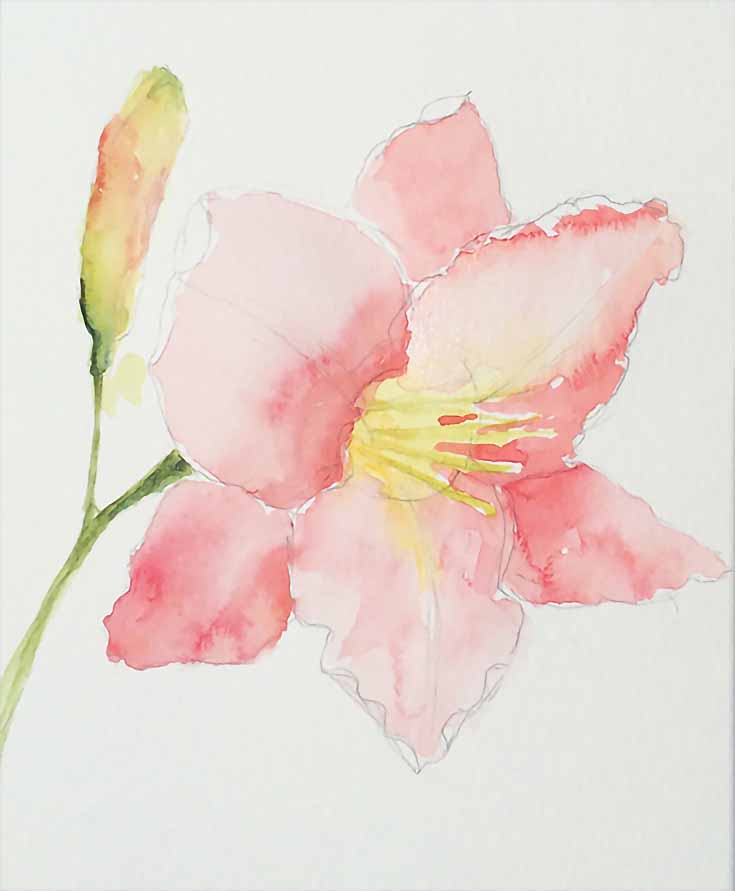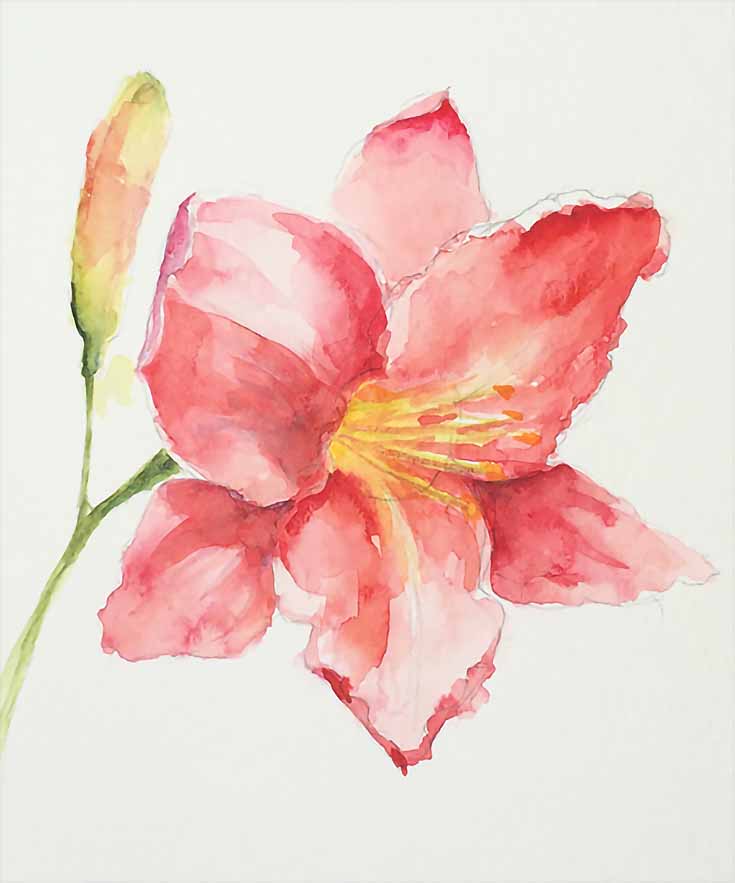The longer I paint with watercolors, the more I find that I love the interaction of paint and water. So instead of trying to control every aspect of a piece, I like to let these elements add to the process and the painting itself.
While not as predictable or tidy as other painting methods, this style suits my personality and, I believe, also embodies the energy of a flower—which is the subject we’ll be painting today.
So, without further ado, here’s how to paint an expressive watercolor floral:
1. Start with a basic flower shape
Unlike my tutorial on painting roses (which have a “cup and bowl” shape) today we will be using the “trumpet” form. Lilies, Bluebells, Morning Glories, Fuchsias, Daffodils, Columbines and Lilies of the Valley all have a “trumpet” shape and (you guessed it!) are shaped like trumpets—or, more specifically, like a cone with a flared opening.
Since these flowers are essentially cones, they always are shaded inside unless facing directly up. (Many of these flowers naturally droop downward as they grow.) The key to drawing and painting this flower shape is to be mindful of the center point of the cone and where it connects to the stem. This will help you draw the shape from any direction.
Sketch out your basic shape as I have above. Look at a flower photo for reference, or better yet, find one in real life and draw from that. At this point, you may also want to add an abstract watercolor background—or, you can leave the background white.
2. Choose your color palette
After sketching, I set out my Mijello Fusion Leakproof palette and found the colors I wanted to use.
If you’re like me and paint outdoors, you may have trouble with your paint drying too fast (I did). It helps to use a spray bottle filled with water and “mist” your palette occasionally. This will keep your paint moist throughout the painting process.
3. Paint your lightest colors first
When painting expressively, you want to work with the flow of paint and water to get the gesture of the flower, its essence, but not every little detail. I usually make three passes on a painting of this sort—the first wash being the quickest and lightest, just to get things going.
In this case, I put down a few light washes of color over the entire flower. The main petals are a single color wash, fading in and out as the water distributed the paint somewhat randomly, yet keeping the darker values mostly in shadow areas. Then, for the flower bud in the upper left, I allowed yellow, red, and green to mingle in a variegated wash technique.
4. Add darker values
In the next phase, I loaded up my brush with slightly more pigment and added darker (and hopefully correct) values for each area of the flower.
This pass takes the most time and thought. You must move quickly since timing is everything in watercolor. If the paper dries completely before you can go back in with more paint, you will get hard edges. If the paper is too wet while you try to add paint, you will simply get a “bloom” of color spreading outward.
Even when you’ve been painting for a long time, you can’t always avoid these things! I don’t mind the occasional hard edge or “bloom” because for me, it is all part of watercolor. Just as nothing in nature is perfect, no painting will be!
So instead of attempting to control everything, try to work with the water and use expressive brush strokes right along with the feeling and movement of the flower. The goal is to get the value right the first time, and then leave it alone.
5. Finish your painting without overworking it
The last phase is for small tweaks and finishes, and this is where I am most likely to get into trouble! It is easy to lose the fresh feel of a painting when you start to “noodle” around with details. Instead, try to keep this phase short and sweet, and stop when you think you are almost finished!
Here you can see I’ve gone in with some blue to add depth to my stems and leaves, and touched a few other areas with additional color.
And that’s it for this painting—nothing dried throughout this process, and instead of trying to control the application of color, my goal was to let it blend slightly with the colors already on the paper.
The resulting “look” is one that is wet and fluid, as though dew itself is dripping from the petals of this lily and sparkling from the long, green leaves.
While this expressive, gestural method is how I prefer to paint, it’s important for you to paint the way that you are most comfortable. A more controlled glazing technique (like the one I demonstrated in my rose tutorial) can be very effective and appealing, too.
Which method do you prefer?
This post may contain affiliate links.





